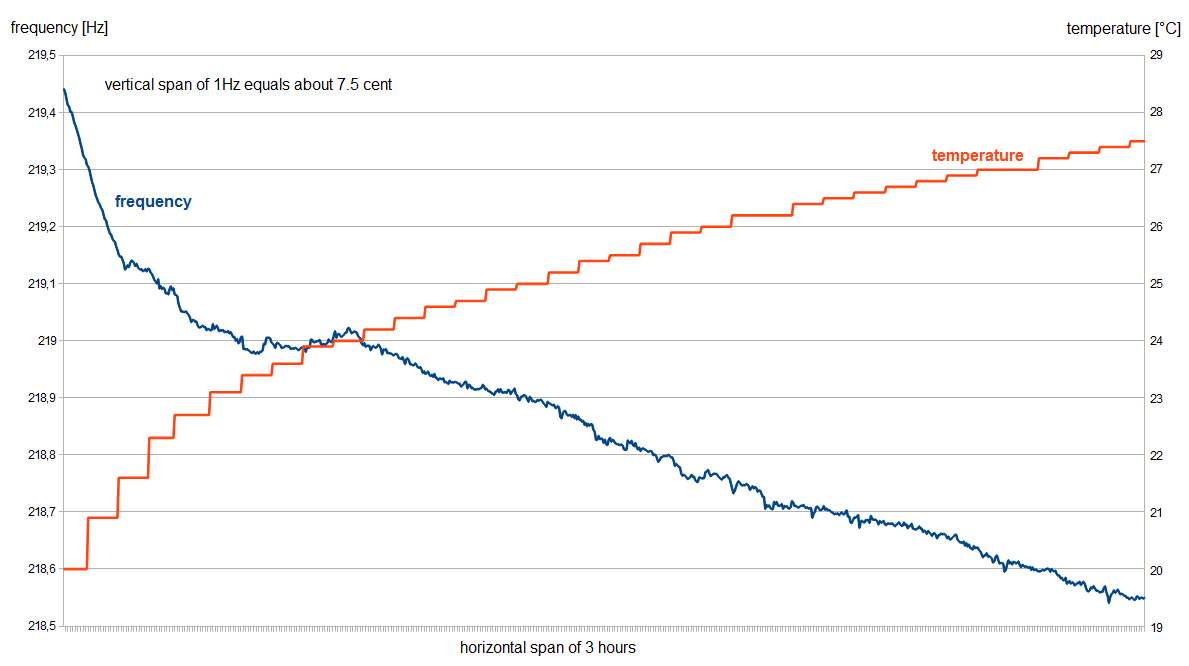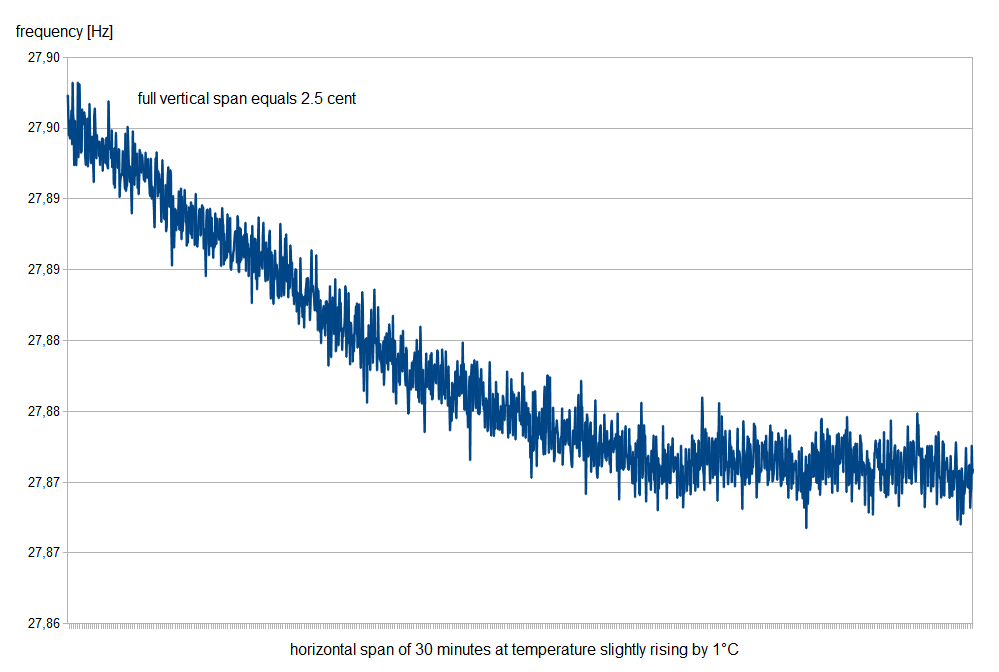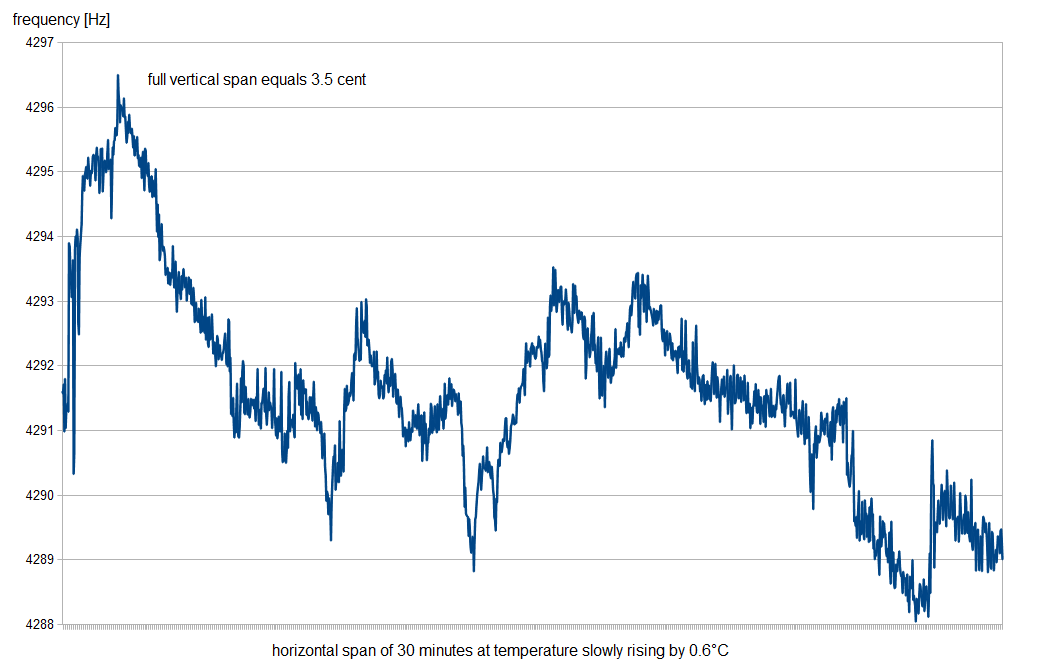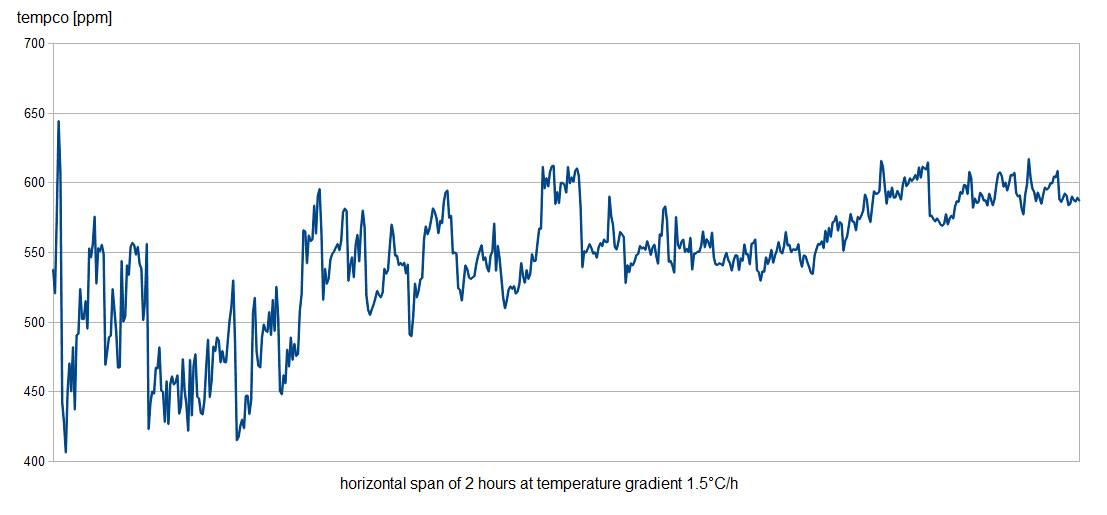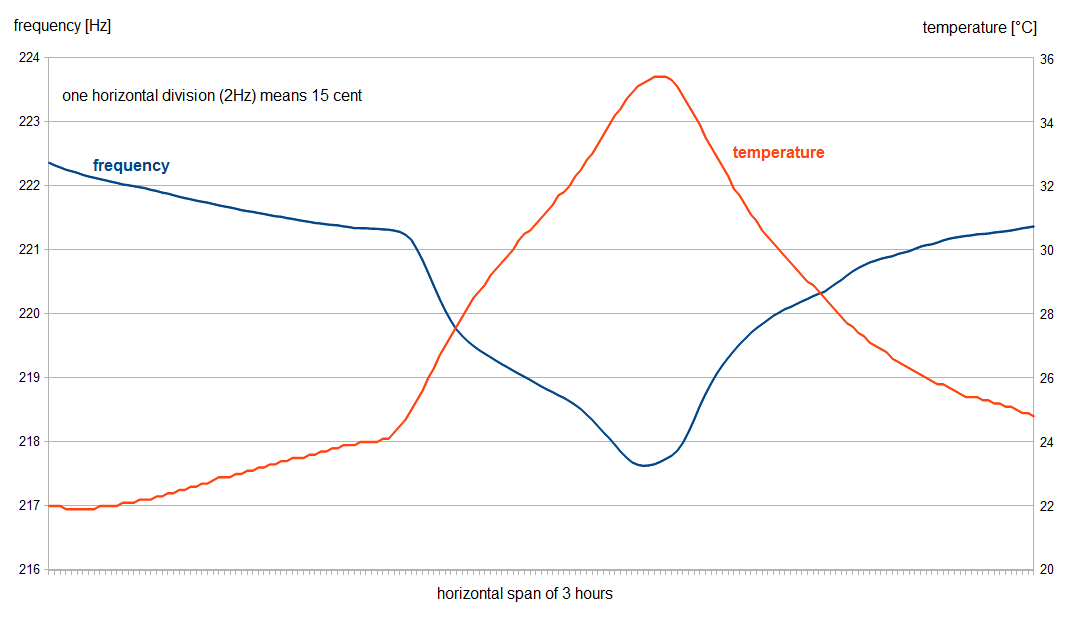First let's look at the waveforms and compare them to (also very recent) CEM3340 Revision G from Onchip. All tests were performed on the same PCB, by swapping the chip in socket, and here is the test circuit:
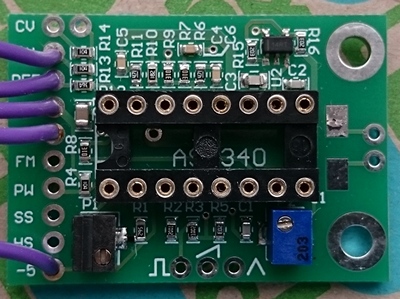
| AS3340 | CEM3340(G) |
| low frequency triangle | |
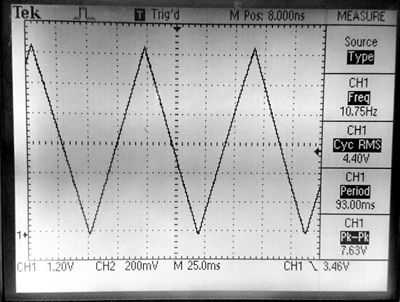 | 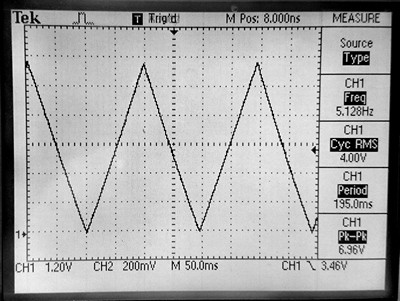 |
| low frequency saw | |
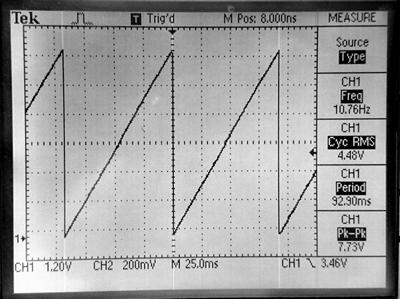 | 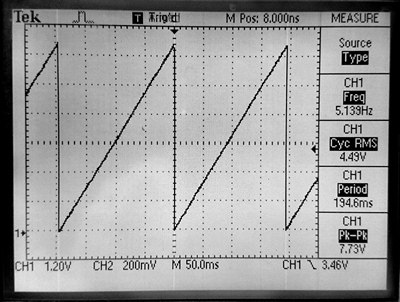 |
| low frequency square | |
| please ignore kilohertz reading here, the scope was fooled by ringing instability of fallng edge of the square wave, obviously this is the same 10Hz and 5Hz accordingly as above | |
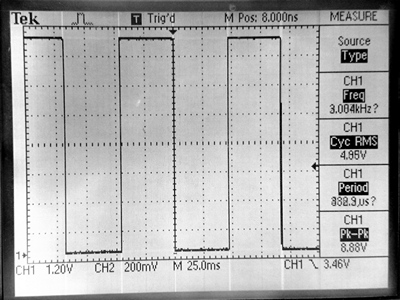 | 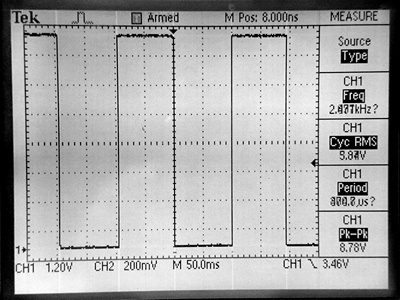 |
| AS3340 | CEM3340(G) |
| high frequency triangle | |
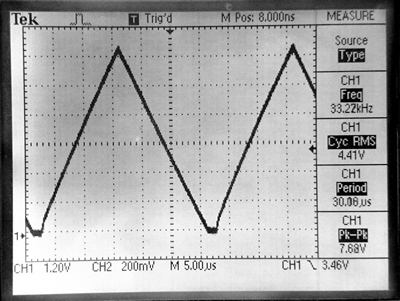 | 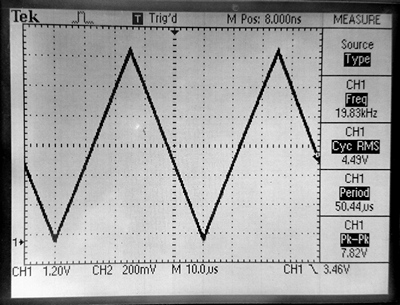 |
| high frequency saw | |
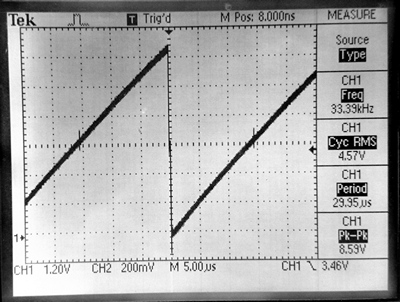 | 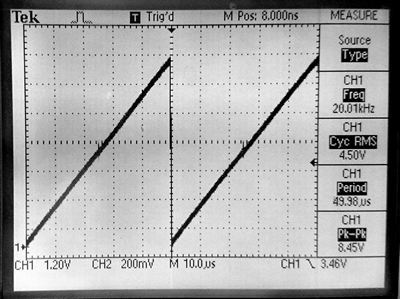 |
| high frequency square | |
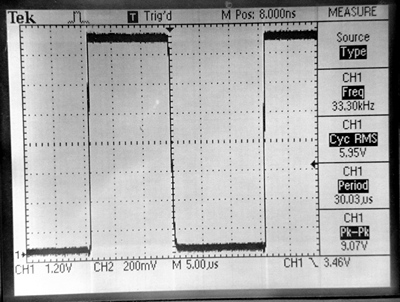 | 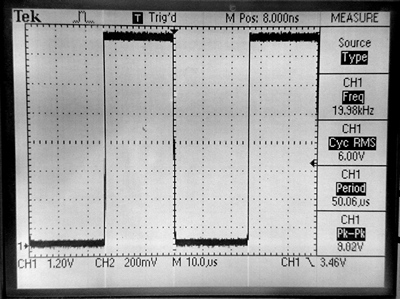 |
| AS3340 | CEM3340(G) |
| saw falling edge | |
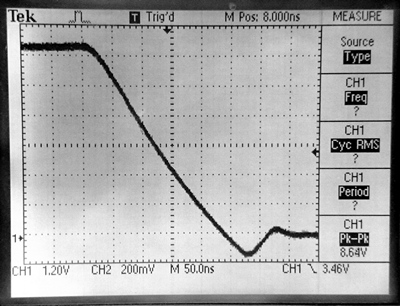 | 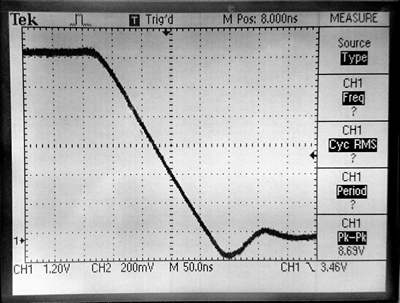 |
| saw mid-hill bump | |
| Because of how tri-to-saw converter works, there is inevitable bump in the middle of saw rising slope. Here it is shown in details | |
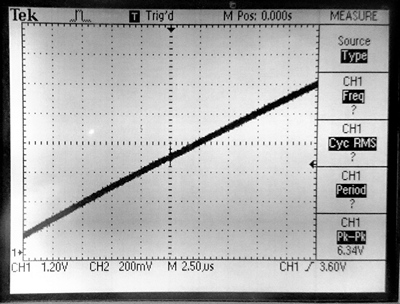 | 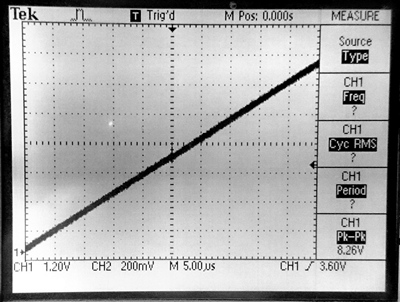 |
| saw mid-hill bump zoomed | |
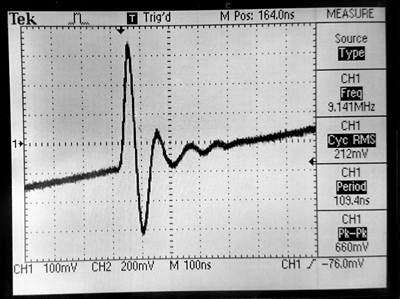 | 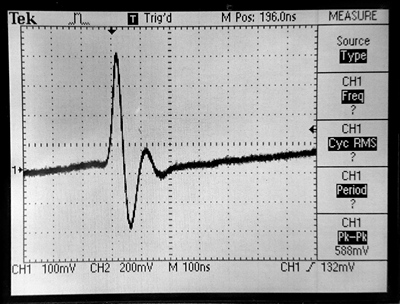 |
| AS3340 | CEM3340(G) |
| triangle low corner at low frequency | |
| Above screenshots of triangle were made after the opamp, so it hides some of the minor artefacts of how internal triangle looks. Here are 3 examples of direct triangle output from the chip. This is the most noticeable difference in waveforms between the chips, however the glitch is only 120mV at worst case. | |
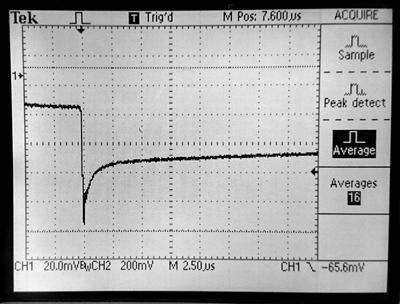 | 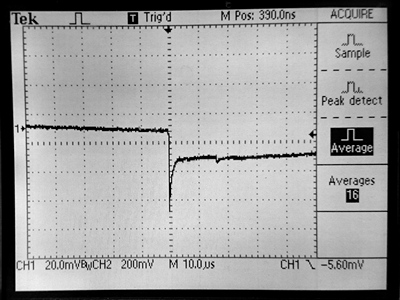 |
| triangle low corner at medium frequency | |
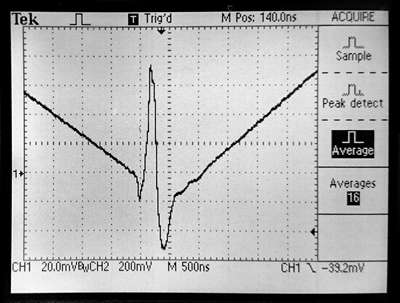 | 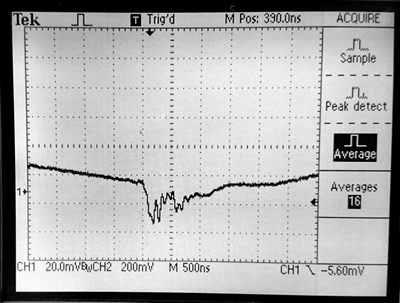 |
| triangle low corner at high frequency | |
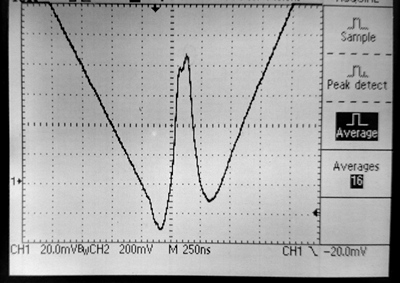 | 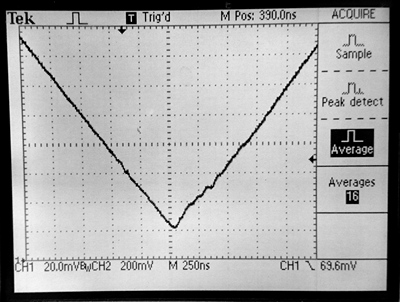 |
| AS3340 | CEM3340(G) |
| triangle top corner | |
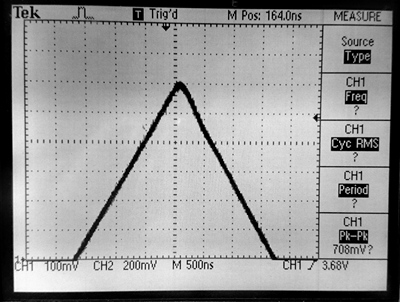 | 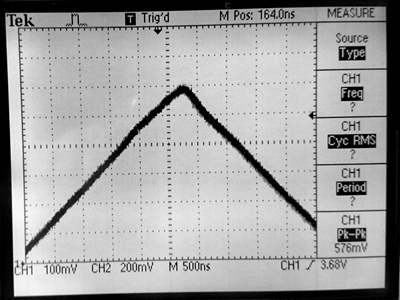 |
Now let's focus on frequency stability. This is just preliminary and non-scientific measurement, as temperature was not actively controlled, but was slowly rising due to self heating of the circuit in closed thermally-isolated cage, and also heated by warm power supply under the box. The temperature profile was measured by logging thermometer and then superimposed on frequency measurements based on timestamps. The VCO board was literally laying on the termometer. However, as it is ambient temperature measurement and not chip temperature, the gradiend had to be very low in order to give it a chance to track temperature with a glimpse of assumption that it is somewhat acurate. Which also means that it was enough to log temperature reading as rarely as once per 5 minutes. Only Alfa chip was tested this way to get the impression of general stability.
During those tests power supply (not the same as before, so it was supplying +15V and -5V this time) was monitored at the beginning and end of each cycle and it drifted only by about 300uV, same applies to the CV input. So basicaly the influence of power supply drift was below 1 cent.
